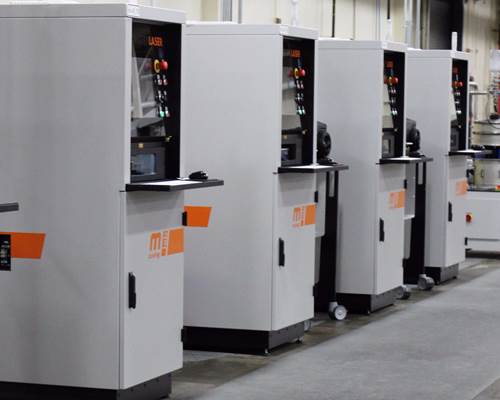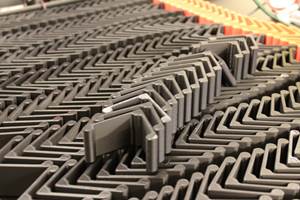3D Printing for Industry
“Additive manufacturing” (AM) describes the use of 3D printing to make functional components, including tools and end-use production parts. Unlike “subtractive manufacturing” processes such as machining, where parts are created by removing material, additive manufacturing builds geometries by “adding” feedstock such as filament, wire or powder.
Depending on the 3D printing process and application, additive manufacturing can utilize a growing catalog of materials including metal alloys, thermoplastics, thermoset polymers and composites.
Even though it is newer than other manufacturing processes, AM is arguably the broadest category of manufacturing we have. Where the machine tool or the mold press has a very specific purpose in a manufacturing process, the AM machine can represent a range of operations and implications. 3D printing potentially displaces casting, assembly, tooling, injection molding and/or other operations. While it first gained traction for production in the aerospace and medical industries, AM is now being applied to an ever-expanding collection of end markets including automotive, dental, heavy equipment, oil and gas, rail, marine, and even consumer goods.
Compared to subtractive processes like milling, additive manufacturing generally provides greater geometric freedoms and utilizes less material. In contrast to forming processes such as injection molding or composites layup, 3D printing does not require a mold or other tooling to create a part.
Additive manufacturing has been shown to be a good option in production applications where long lead times or associated costs preclude the use of expensive tooling; complexity of geometry is advantageous; and/or low volumes are required, though the quantities appropriate for 3D printing continue to increase.
Productive adoption of additive manufacturing requires rethinking assumptions about manufacturing and perhaps reshaping the manufacturing business. In addition to its many benefits, AM can also bring different requirements for things like postprocessing, material handling, safety and finishing. Its impact on the enterprise extends beyond the manufacturing floor, potentially touching everything from marketing to shipping.




